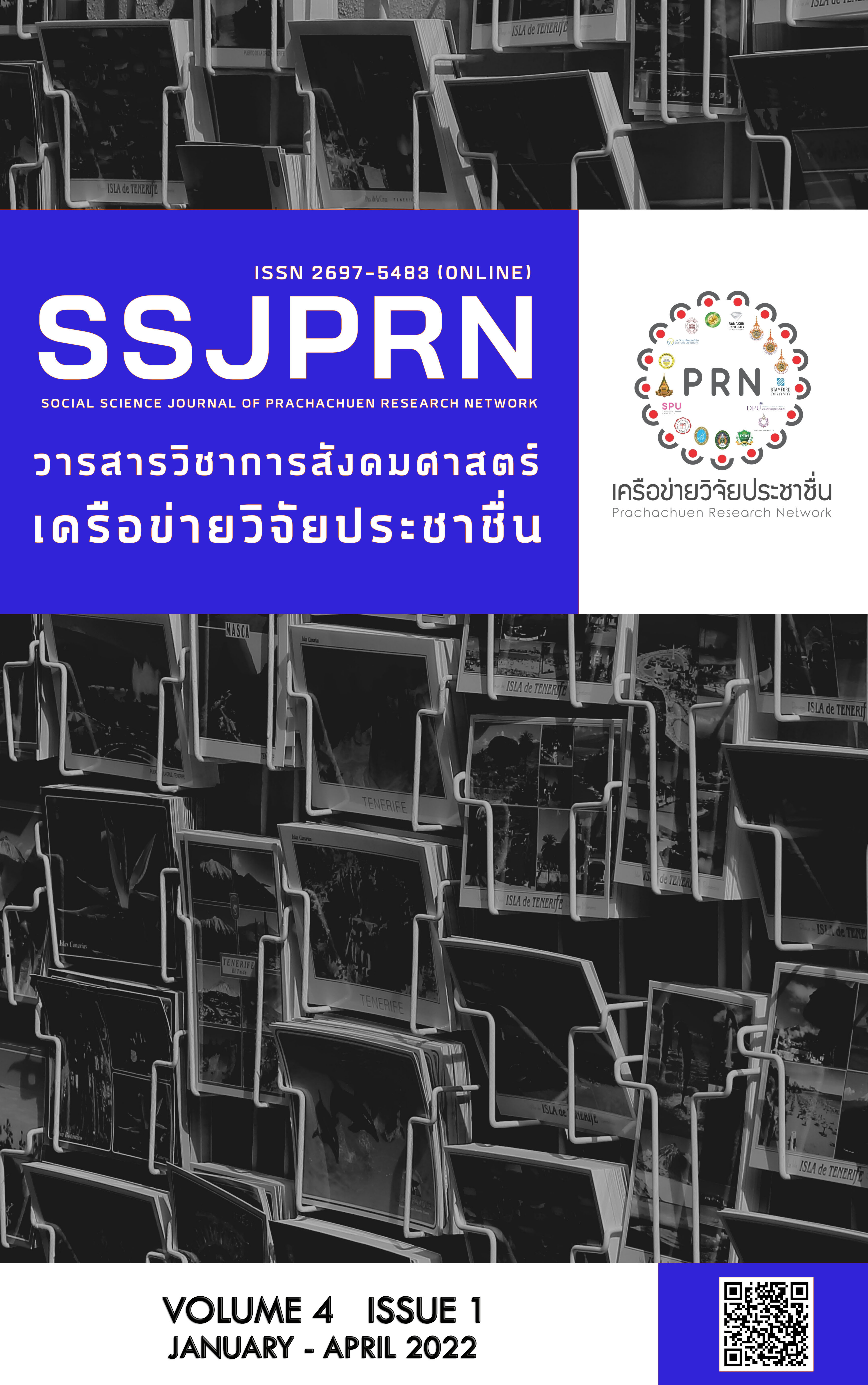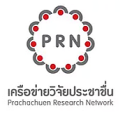ความสัมพันธ์ของคำถามและการตอบคำถาม กรณีศึกษานายกรัฐมนตรีและผู้สื่อข่าว
คำสำคัญ:
ความสัมพันธ์ระหว่างคำถามและคำตอบ, นายกรัฐมนตรี, ผู้สื่อข่าวบทคัดย่อ
การวิจัยเชิงปริมาณครั้งนี้มีวัตถุประสงค์เพื่อวิเคราะห์ความสอดคล้องหรือความสัมพันธ์ระหว่างเนื้อหาการตอบคำถามของนายกรัฐมนตรีต่อคำถามผู้สื่อข่าว เนื่องจากภาษามีบทบาทสำคัญอย่างมาก ในวาทกรรมการเมืองที่สื่อให้เห็นถึงแนวความคิดหรืออุดมการณ์ของนักการเมืองได้ โดยเก็บรวบรวมถ้อยคำและถอดความถ้อยคำของนายกรัฐมนตรีที่ตอบสนองต่อคำสัมภาษณ์ของผู้สื่อข่าว ที่เกิดขึ้นในการแถลงข่าวหลังการประชุมประจำเดือนมีนาคม จำนวน 5 ครั้ง รวมถึงดำเนินการวิเคราะห์กลวิธีการตอบคำถามที่นายกรัฐมนตรีใช้ในการให้สัมภาษณ์ อิงจากทฤษฎีการเชื่อมโยงเนื้อหาของ Halliday กับ Hasan และคำนวณกลวิธีต่าง ๆ ที่พบระหว่างการให้สัมภาษณ์ในรูปแบบของค่าร้อยละ
ผลการวิจัยแสดงให้เห็นว่า ร้อยละ 25 ของคำตอบของนายกรัฐมนตรีสอดคล้องหรือสัมพันธ์กับคำถามของผู้สื่อข่าว ในด้านของกลวิธีที่ใช้ระหว่างการตอบคำถาม พบว่า นายกรัฐมนตรีตอบสนองต่อคำถามของผู้สื่อข่าวด้วยวิธีการกล่าวซ้ำข้อความมากที่สุด เพื่อเน้นย้ำอุดมการณ์ทางการเมืองและเพื่อเพิ่มความน่าเชื่อถือของประชาชนผ่านประเด็นต่าง ๆ ที่ถูกสัมภาษณ์ ผลการวิจัยครั้งนี้ระบุให้เห็นอีกว่า วจนภาษาหรือการสื่อสารด้วยถ้อยคำของนักการเมือง มีน้ำหนักมากกว่าด้านอากัปกิริยาหรืออวัจนภาษา ที่สามารถสะท้อนอุดมการณ์ทางการเมือง การตัดสินใจ รวมไปถึงการยอมรับและพิจารณาจากประชาชน ได้ชัดเจนที่สุด
เอกสารอ้างอิง
Bahaziq, A. (2016). Cohesive Devices in Written Discourse: A Discourse Analysis of a Student’s Essay Writing. English Language Teaching, 9(7), 112-199.
Briesmaster, M. & Etchegaray, P. (2017). Coherence and Cohesion in EFL Students’ Writing Production: The impact of a metacognition-based intervention. Medellín, Colombia, 22(2), 183-202.
Bull, P., & Mayer, K. (1993). How not to answer questions in political interviews. Political Psychology, 4, 651-666.
Chilton, P. (2004). Analysis Political Discourse: Theory and Practice. London: Routledge.
Clayman, S. (2001). Answers and evasions. Language in Society, 30(3), 403–442.
Dontcheva-Navratilova, O. (2017). Coherence and persuasion in political speeches: Ideological coherence in coherent discourse. In Coherence and Cohesion in English Discourse (pp. 129-153). Brno: Masaryk University.
Enyi, A. U. & Chitulu, M. O. (2015). Texture, Textuality and Political Discourse: A Study of Lexical Cohesion in Nigeria’s President Goodluck Jonathan’s Inaugural Address, May, 2011. Advances in Language and Literary Studies, 6(5), 77-86.
Eriksson, G. (2011). Follow-up Questions in Political Press Conferences. Journal of Pragmatics, 43, 3331-3344.
Eshbaugh, M. (2012). The Politics of Presidential Press Conferences. American Politics Research, 41(3), 471–497.
Favart, M., Potocki, A., Broc, L., Quemart, P., Bernicot, J., & Olive, T. (2016). The management of cohesion in written narratives in students with specific language impairment: Differences between childhood and adolescence. Research in Developmental Disabilities, 59, 318-327.
Halliday, M. A. K., & Hasan R. (1976). Cohesion in English. London: Longman.
Hameed, T. H. (2008). Cohesion in Texts: A Discourse Analysis of a News Article in a Magazine. AL-Faith Journal, 37, 81-114.
Jabeen, I., Qasim, Z., & Nawaz, S. (2014). Cohsive Ties and Meaning Comprehension. International Journal of Academic Research and Reflection, 2(4), 100-109.
Jalilifar, R. A. & Alavi, M. (2011). Power and Politics of Language Use: A Survey of Hedging Devices in Political Interviews. The Journal of Teaching Language Skills, 3(3), 44.
Karadeniz, A. (2017). Cohesion and Coherence in Written Texts of Students of Faculty of Education. Journal of Education and Training Studies, 5(2), 93-99.
Klebanov, B. B., Diermeier, D., & Beigman, E. (2008). Lexical Cohesion Analysis of Political Speech. Political Analysis, 16, 447-463.
Kwon, Y. O. (2019). Social Trust and Economic Development. USA: Edward Elgar Publishing Limited.
Li, J. (2013). The Application and Significance of Discourse Cohesion and Analysis in Practical Teaching of Foreign Language. Theory and Practice in Language Studies, 3(8), 1393-1398.
Mandarani, V. & Fakhruddin, M. Z. (2020). Grammatical and Lexical Cohesion Analysis of Trump’s Speech Upon Soleimani Assassination. Journal of English Languages and Literature, 7(1), 131-139.
Pathomchaiwat, L. (2020). Discourse Analysis of the Political Speeches. In Proceedings of the 12th NPRU National Academic Conference (pp. 2098-2105). Nakhon Pathom: Nakhon Pathom Rajabhat University.
Struthers, L., Lapadat, C. J., & MacMillan, D. P. (2013). Assessing cohesion in children’s writing: Development of a checklist. Assessing Writing, 18(3), 187-201.
Voltmer, K., & Brants, K. (2011A). Political Communication in Postmodern Democracy: Challenging the Primacy of Politics. Britain: Palgrave MacMillan.
Voltmer, K., & Brants, K. (2011B). A Question of Control: Journalists and Politicians in Political Broadcast Interviews. Britain: Palgrave MacMillan.
Wang, J. (2010). A Critical Discourse Analysis of Barack Obama’s Speeches. Journal of Language Teaching and Research, 1(3), 254-261.
Wang, Y., & Guo, M. (2014). A Short Analysis of Discourse Coherence. Journal of Language Teaching and Research, 5(2), 460-465.
Ye, J., & Liu, X. (2020). Analysis of Cohesion and Coherence in Two Truths to Live By. Theory and Practice in La
ดาวน์โหลด
เผยแพร่แล้ว
รูปแบบการอ้างอิง
ฉบับ
ประเภทบทความ
สัญญาอนุญาต
ลิขสิทธิ์ (c) 2022 วารสารวิชาการสังคมศาสตร์เครือข่ายวิจัยประชาชื่น

อนุญาตภายใต้เงื่อนไข Creative Commons Attribution-NonCommercial-NoDerivatives 4.0 International License.
บทความที่ได้รับการตีพิมพ์เป็นลิขสิทธิ์ของวารสารวิชาการสังคมศาสตร์เครือข่ายวิจัยประชาชื่น







